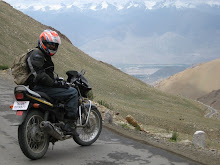The Red Barron
Born in Kleinburg, near Breslau, Germany, was this young boy whom the world would remember as the fearing Red Barron - Manfred, Freiherr von Richtofen. The pilot who was the fear in skies. Such was the courage of this pilot that he painted his plane in red - telling everyone in the air, ground or water near him - here I am, come and get me. The red colour both acted as fear and target for him. For some pilots it was the most fearing thing while for others it was the target to kill. Richtofen is credited with 80 confirmed kills, the highest ever (till now, and should remain).
remember as the fearing Red Barron - Manfred, Freiherr von Richtofen. The pilot who was the fear in skies. Such was the courage of this pilot that he painted his plane in red - telling everyone in the air, ground or water near him - here I am, come and get me. The red colour both acted as fear and target for him. For some pilots it was the most fearing thing while for others it was the target to kill. Richtofen is credited with 80 confirmed kills, the highest ever (till now, and should remain).
Richtofen initially joined the German cavalry unit which later served in the first world war. Disappointed as he was not able to do much in the war because the cavalary unit had became obsolete due to machine guns; Richtofen applied for the German flying service. Little did he knew that he would become the greatest combat pilot ever. After few years in service Richtofen joined the first fighter wing of the German air force where he met Oswald Boelcke. Oswald Boelcke was the man who created Air Combat also known as "Dog Fighting". The same that you must have seen in movies like Top Gun, Iron Eagle, stealth or the likes. Though with time and technology the dog fighting has become rare, but even today most pilot say that if in dog fight you ignore the rules of Oswald Boelcke, then the chances are you won't come back alive unless the others do the same. Richtofen regarded Boelcke as the greatest, in his own words he says that "I am after all only a combat pilot, but Boelcke, he was a hero". Unfortunately for Germans Boelcke died in an air crash when one of his own squadron pilots hit him during an air combat.
Oswald Boelcke was the man who created Air Combat also known as "Dog Fighting". The same that you must have seen in movies like Top Gun, Iron Eagle, stealth or the likes. Though with time and technology the dog fighting has become rare, but even today most pilot say that if in dog fight you ignore the rules of Oswald Boelcke, then the chances are you won't come back alive unless the others do the same. Richtofen regarded Boelcke as the greatest, in his own words he says that "I am after all only a combat pilot, but Boelcke, he was a hero". Unfortunately for Germans Boelcke died in an air crash when one of his own squadron pilots hit him during an air combat.
Ricthtofen continued to server the country and his squaron called the "Flying Circus" became a pain to the allied forces. Non came close to this man who's kill grew more and more. Richtofen also succeded in shooting down a famous rival Lanoe Hawker a British ace once again proving his superiority.
With span of time, Richtofen grew emotionally weak. In a series that I watched on him few years back, one of relatives stated this - Richtofen was looking at a picture of him along other pilots, like the one we have of a batch. When his mothered asked about the pilots one by one, he kept nodding in a no about them ... at the end he said - "They are all dead". Over the years, the war had got into him. He was always under the pressure to lead and show by example. And this later paid dearly to him. Manfred von Richtofen was shot down on 21 April 1918. The death of the pilot had been a big controversy with various agencies seeking credit. Richtofen was shot down during pursuing (at very low altitude) a Sopwith Camel piloted by a novice Canadian pilot, Lieutenant Wilfrid "Wop" May of No. 209 Squadron, Royal Air Force. In turn, the Baron was spotted and briefly attacked by a Camel piloted by a school friend (and flight Commander) of May, Canadian Captain Arthur "Roy" Brown, who had to dive steeply at very high speed to intervene, and then had to climb steeply to avoid hitting the ground. Richthofen turned to avoid this attack, and then resumed his pursuit of May.
It was almost certainly during the last stage of this pursuit that Richthofen was hit by a single .303 bullet, that caused such severe damage to his heart and lungs that it must have produced a very speedy death. In the last seconds of his life, he managed to make a hasty but controlled landing in a field on a hill near the Bray-Corbie road, just north of the village of Vaux-sur-Somme, in a sector controlled by the Australian Imperial Force (AIF). His Fokker was not badly damaged by the landing, but it was speedily demolished by souvenir hunters. One witness, Gunner George Ridgway, stated that when he and other Australian soldiers reached the plane, Richthofen was still alive but died moments later.




1 Response to The Red Barron
nice blog dude....
Something to say?